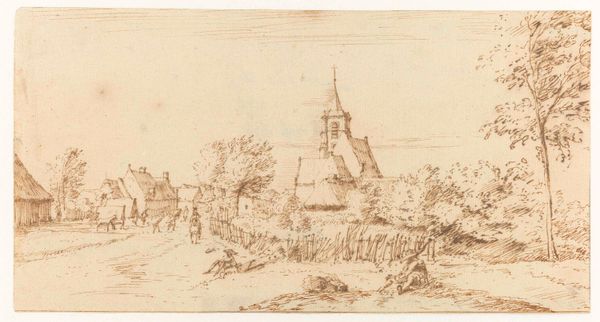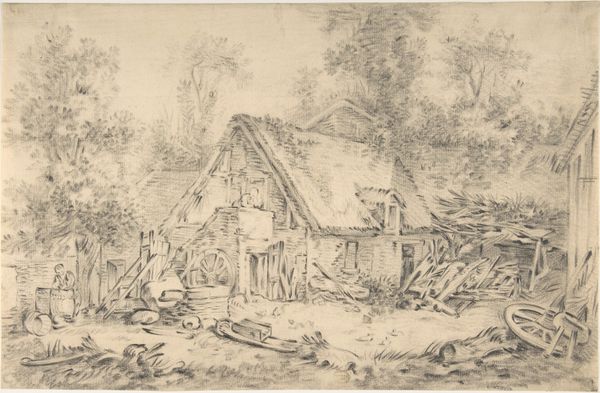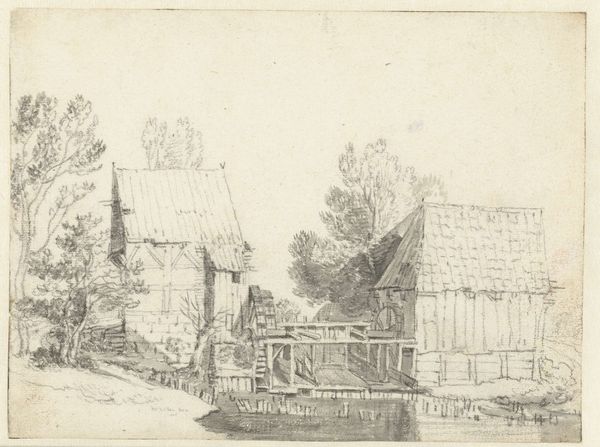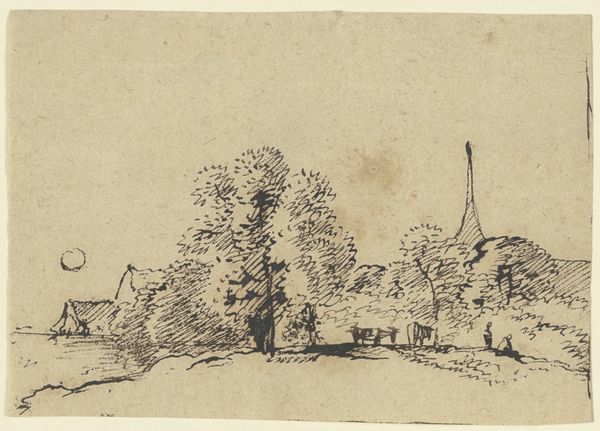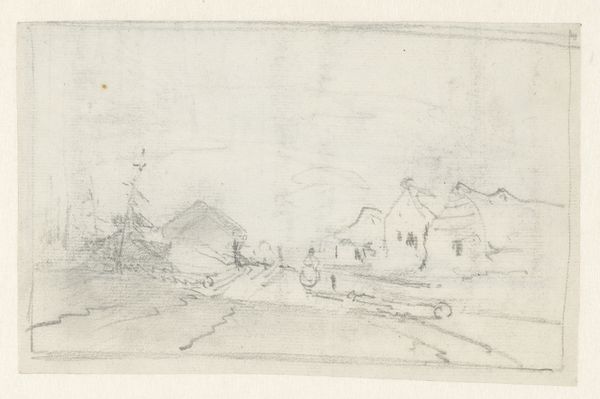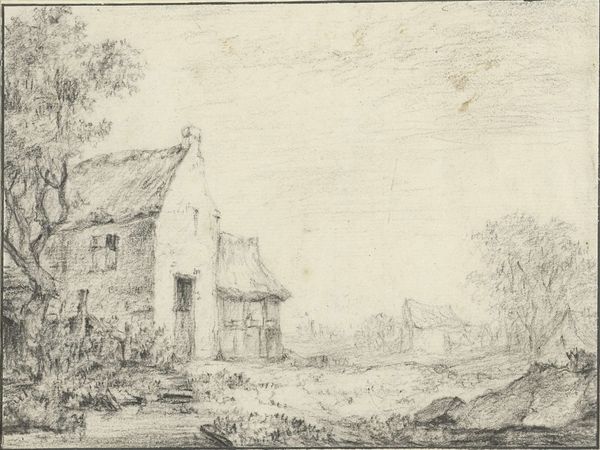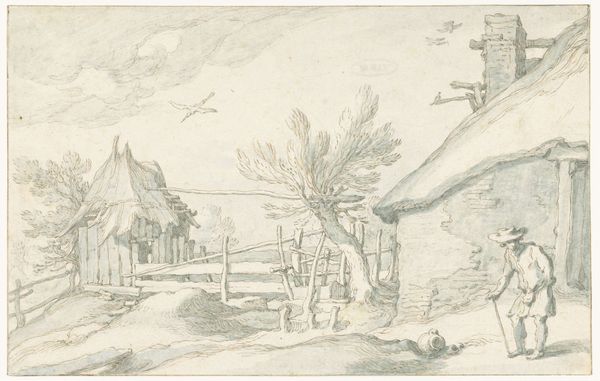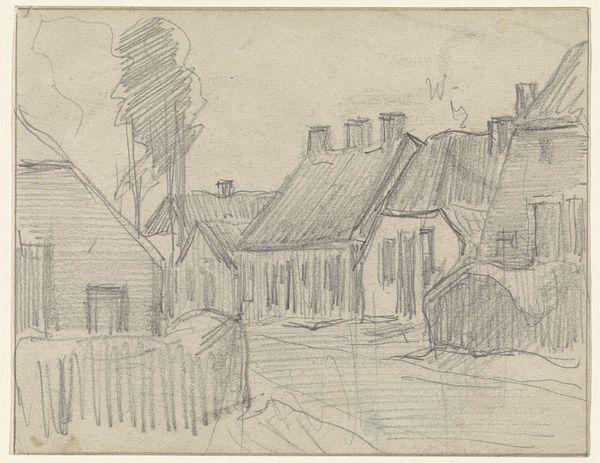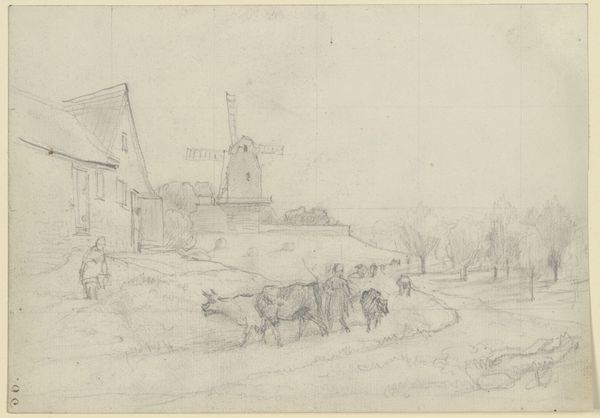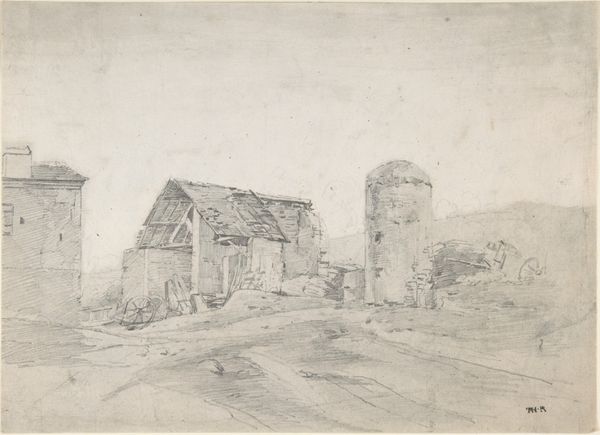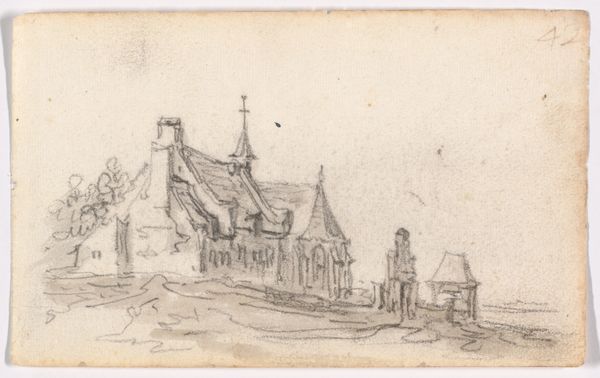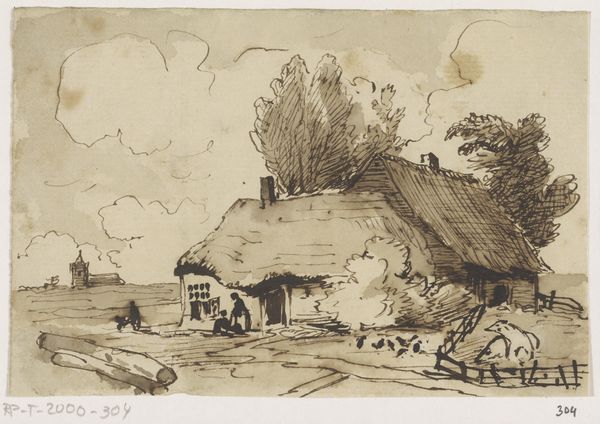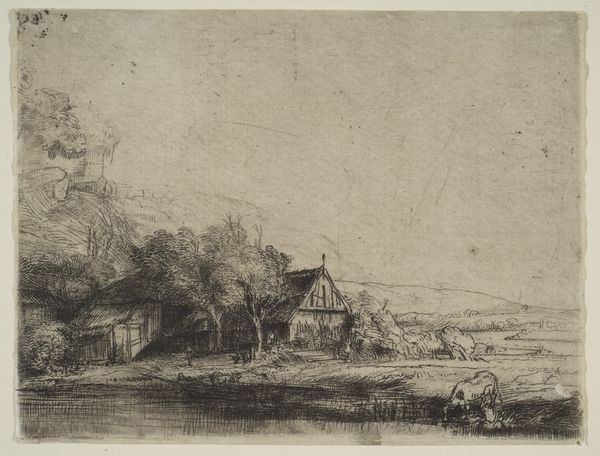
drawing, print, pencil
drawing
dutch-golden-age
pen sketch
pencil sketch
landscape
pencil
Dimensions: sheet: 3 13/16 X 6 in. (9.7 x 15.3 cm)
Copyright: Public Domain
Editor: Here we have Rembrandt van Rijn’s "Landscape With Two Mills," created sometime between 1620 and 1669, a pencil drawing housed here at the Met. It feels so quiet, almost dreamlike with its delicate lines. What do you see in this piece, considering its place in Dutch Golden Age landscape art? Curator: What I immediately notice is how the mills aren't simply objects. Consider the windmill. Throughout centuries, mills have stood as symbols of industry, certainly. But also transformation. The grinding of grain represents the transmutation of raw materials into sustenance, a fundamental act of civilization. Editor: Transformation...like an alchemical process almost? Curator: Precisely. And this isn't just visual. These mills stand tall. They dominate the skyline, becoming visual anchors in a landscape that otherwise seems fleeting. Their prominent position says a great deal about their cultural importance in 17th-century Dutch society, doesn't it? A reliance on them for trade, industry, food... the wheel turning representing prosperity. It suggests a specific type of landscape that exists nowhere else in Europe. Editor: So they’re more than just scenery; they're practically emblems of Dutch identity? Curator: Yes. Consider also that landscape painting was developing during the Golden age alongside a burgoening mercantile identity for the Netherlands; this all informed how citizens defined themselves. We read so much from images even if we don't consciously notice these associations. Editor: This has totally transformed my understanding. Now I'm seeing how the mills connect to the collective memory. Curator: And seeing beyond just "pretty" scenery into the layers of meaning the artist instilled!
Comments
No comments
Be the first to comment and join the conversation on the ultimate creative platform.
